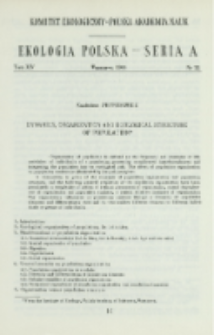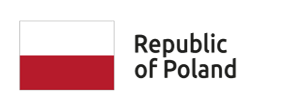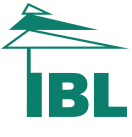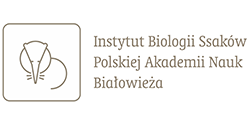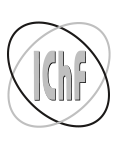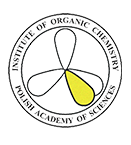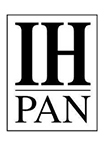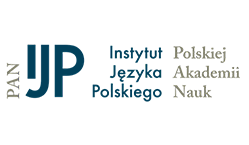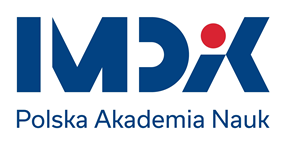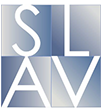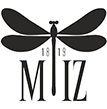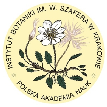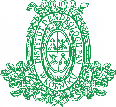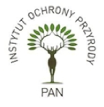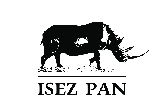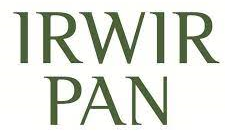- Search in all Repository
- Literature and maps
- Archeology
- Mills database
- Natural sciences
Advanced search
Advanced search
Advanced search
Advanced search
Advanced search

Object
Title: Dynamics, organization and ecological structure of population
Subtitle:
Dynamics, organization and structure of population ; Dynamika, organizacja i ekologiczna struktura populacji
Contributor:
Polska Akademia Nauk. Komitet Ekologiczny
Publisher:
Place of publishing:
Description:
Pages 413-436 : illustrations ; 24 cm ; Bibliographical references (pages 433-435) ; Abstract in Polish
Type of object:
Abstract:
Organization of population is defined as the frequency and charakter of life activities of individuals of a population generating complicated interdependences and integrating the population into an ecological unit. The effect of population organization on population numbers is illustrated by factual examples. A discussion is given of the concepts of population organization and population structure, and the folloving general properties of the population organization have been postulated: a complexity of action of various phenomena of organization, mutual dependences of organization and population numbers, a certain relative inertness of organization. The organization influences on population numbers through a diversity of population elements and differentiates them and by this renders different chances to different individuals or groups of individuals.
References:
1. Allee, W. C. 1931 - Animal aggregation. A study in general sociology - Chicago.
2. Allee, W. C., Emerson, A. E., Park, T. and Smidt, K. P. 1949 – Principles of animal ecology - Philadelphia - London.
3. Anderson, P. K. 1961 - Density, social structure and non social environment in house-mouse populations and the implications for regulation of numbers - Trans. N. Y. Acad. Sci. s. II, 23: 447-451.
4. Andrewartha, H. G. 1961 - Introduction to the study of animal population - Chicago.
5. Andrewartha, H. G. and Birch, L. C. 1954 - The distribution and abundance of animals - Chicago.
6. Andrzejewski, R., Petrusewicz, K., Walkowa, W. 1959 – Preliminary report on results obtained with a living trap in a confined population of mice - Bull.. Ac. Pol. Sci. Cl. II, 7: 367-370.
7. Andrzejewski, R., Wrocławek, H. 1961a - Mortality of small rodents in traps as indication of the diminished resistance of the migrating part of a population - Bull. Acad. Pol. Sci. Cl. II, 9: 491-492.
8. Andrzejewski, R., Wrocławek, H. 1961b - Mass occurrence of Apodemus agrarius (Pallas 1771) and variations in the number of associated Muridae – Acta theriol. 5: 173-184.
9. Andrzejewski, R., Kajak, Z., Pieczyńska, E. 1963 - Efekty migracji - Ekol. Pol. B, 9: 161-172.
10. Brown, R. Z. 1953 - Social behavior, reproduction, and population changes in the house mouse (Mus musculus L.) - Ecol. Monogr. 23: 217-240.
11. Calhoun, J.B. 1956 - A comparative study of the social behavior of two inbred strains of the house mice - Ecol. Monogr. 26: 81-103.
12. Chitty, D. 1960 - Population processes in the vole and their relevance to general theory - Canad. J. Zool. 38: 99-113.
13. Christian, J. J. 1961 - Phenomena associated with population density - Proc. nat. Acad. Sci. Washington, 47: 428-449.
14. Grębecki, A., Petrusewicz, K. 1963 - Density and size of medium in populations of Paramecium caudatum - Ekol. Pol. A, 11: 589-600.
15. Janion, S. M. 1960 - Quantitative dynamics of fleas (Aphaniptera) infesting mice of Puszcza Kampinoska Forest - Bull. Ac. Pol. Sci. Cl. II, 8: 213-218.
16. Janion, S. M. 1961 - Studies on the differentiation of a house mice population according to the occurrence of fleas (Aphaniptera) - Bull. Acad. Pol. Sci. Cl. II, 9: 501-506.
17. Kaczmarek, W. 1955 - Factors shaping the local migrations of Colorado beetle (Leptinotarsa decemlineata Say) - Ekol. Pol. A, 3: 65-83.
18. Kaczmarek, W. 1960 - Research on the space pattern of the population of several chosen species of Collembola - Ekol. Pol. A, 8: 49-64.
19. Lack, D. 1954 - The natural regulation of animal numbers – Oxford, 343 pp.
20. Mayr, E. 1947 - Systematics and the origin of species - New Jork.
21. Naumov, N. P. 1956 - Mezvidovye i vnutrividovye otnosenija u zivotnych – Usp. sovr. Biol. 41: 74-89.
22. Naumov, N. P. 1963 - Ekologija zivotnych - Moskva, 618 pp.
23. Nicholson, A, J. 1950 - Population oscillations caused by competition for food - Nature l65: 165-169.
24. Nicholson, A, J. 1954 - An outline of the dynamics of animal population - Austral. S. Zool. 2/1/.
25. Nicholson, A. J. 1957 - The self-adjustment of populations to change - Cold. Spring Harbor, Symposia XXII.
26. Odum, E. P. 1959 - Fundamentals of ecology - Philadelphia - London, 562 pp.
27. Opuszyński, K., Trojan, P. 1963 - Distribution of burrows and elements of the population structure of small forest rodents - Ekol. Pol. A, 11: 339-352.
28. Park, T. 1942 - Integration in infrasocial insect population - Biol. Symp., 8.
29. Petrusewicz, K. 1957 - Investigation of experimentally induced population growth - Ekol, Pol. A, 5: 281-309.
30. Petrusewicz, K. 1959 - Preliminary report of results obtained with a living trap in a confined population of mice - Bull. Ac. Pol. Sci. Cl. II, 7: 367-370.
31. Petrusewicz, K. 1960 - An increase in mice population induced by disturbance of the ecological structure of the population - Bull. Acad. Pol. Sci. Cl. II, 8: 301-304.
32. Petrusewicz, K. 1963a - Population growth induced by disturbance in the ecological structure of the population - Ekol. Pol. A, 11: 87-125.
33. Petrusewicz, K.1963b - General remarks on the productivity of confined populations - Ekol. Pol. A, 11: 617-624.
34. Petrusewicz, K. 1963c - Zagajenie sympozjum poświęconego zagadnieniom migracji - Ekol. Pol. B, 9: 125-129.
35. Petrusewicz, K., Ryszkowski, L., Tarwid, K.1958 - Jednostki podlegające ewolucji (Problemy Ewolucjonizmu V. IV) – Warszawa, 174-234.
36. Petrusewicz, K., Wilska, T. 1959 - Investigation of the influence of inter-population relations on the results of fights between male mice - Ekol. Pol. A, 7: 357-390.
37. Petrusewicz, K., Andrychowska, R. 1960 - Dalsze badania nad wpływem populacji na rezultat walk samców myszy - Ekol. Pol. A, 8: 325-333.
38. Petrusewicz, K., Andrzejewski, R. 1962 - Natural history of a free-living population of house mice (Mus musculus Linnaeus) with particular reference to groupings within the population - Ekol. Pol. A, 10, 5: 85-122.
39. Petrusewicz, K., Trojan, P.1962 - The influence of the size of the cage on the numbers and density of a self-ranging population of white mice - Ekol, Pol. A, 11: 612-614.
40. Petrusewicz K., Prus, T., Rudzka, H. 1963 - Density and size of medium in populations of Tribolium - Ekol. Pol. A, 11: 603-608.
41. Pieczyńska, E. 1964 - Investigations on colonization of new substrates by nematodes (Nematoda) and some other periphyton organisms - Ekol. Pol. A, 12: 183-254.
42. Pielowski, Z., 1962 - Untersuchungen uber die okologie der Kreuzotter (Vipera berus L.) - Zool. Jb. Syst. 89: 479-500.
43. Pinowski, J. 1965 - Overcrowding as one of the causes of dispersal of young of Tree Sparrows - Bird Study, 12: 27-33.
44. Ryszkowski, L. 1962 - Differences in trapping frequency of coypu - Bull. Acad. Pol. Sci. Cl. H, 10:91-94.
45. Sandner H. 1959 - Dalsze badania nad rolą i charakterem zagęszczenia populacji u wołka zbożowego (Calandra granaria L.) - Ekol. Pol. B, 5: 261-265.
46. Simpson, G. G. 1950 - The meaning of evolution - New Haven, 364 pp.
47. Southwick, Ch. H. 1955a - The population dynamics of confined house mice supplied with unlimited food - Ecology, 36: 212-224.
48. Southwick, C. H. 1955h - Regulatory mechanisms of house mouse populations: Social behaviour affecting litter survival - Ecology, 36: 627-634.
49. Southwick, C. H. 1958 - Population characteristics of house mice living in English corn ricks: Density relationships - Proc. zool. Soc. London, 131: 163-175.
50. Stańczykowska, A. l 959 - Rozmieszczenie i dynamika liczebności żyworódki paskowanej Viviparus fasciatus Mull. na terenie łachy Konfederatka - Ekol. Pol. B, 5: 55-60.
51.Stańczykowska, A., Wasilewski, L. 1963 - Przyczyny i przebieg migracji - Ekol. Pol. B, 9: 151-160.
52. Strecker, L. R., Emlen, J. T. 1953 - Regulatory mechanisms in house-mouse populations: the effect of limited food supply on a confined population - Ecology, 34: 375-386.
53. Uhrich, J. 1938 - The social hierarchy in albino mice - J. comp. Psycho 1. 25: 373-413.
54. Varley G. C., 1947 - The natural control of population balance in the knapweed gall--fly (Urophora jaceana ) - Journ. Animal Ecology 16: 139-187.
55. Vogt, M. 1954 - The role of adrenal gland in homeostasis - Quart, J. exp. Phys. 39: 245-252.
56. Wasilewski, L. 1961 - Certain aspects of habitat selection of birds - Ekol. Pol. A, 9: 111-137.
57. Wierzbowska, T., Petrusewicz, K. 1964 - Residency and rate of disappearance of two free-living populations of the house Mus musculus L. - Ekol. Pol. A, 11: 557-574.
58. Wijngaarden, A. van 1960 - The population dynamics of four confined population of the continental vole Microtus arvalis - Meded. R. J. V. O. N., 84.
59. Wright, G. G. 1949 - Adaption and selection (Genetics, paleontology and evoiution - Jepsen, G. L. Mayr, E., Simpson, G. G. Editors) - Princeton N. Y.
Relation:
Volume:
Issue:
Start page:
End page:
Detailed Resource Type:
Format:
Resource Identifier:
Source:
MiIZ PAN, call no. P.2840 ; click here to follow the link
Language:
Language of abstract:
Rights:
Creative Commons Attribution BY 3.0 PL license
Terms of use:
Copyright-protected material. [CC BY 3.0 PL] May be used within the scope specified in Creative Commons Attribution BY 3.0 PL license, full text available at: ; -
Digitizing institution:
Museum and Institute of Zoology of the Polish Academy of Sciences
Original in:
Library of the Museum and Institute of Zoology of the Polish Academy of Sciences
Projects co-financed by:
Access:
Object collections:
- Digital Repository of Scientific Institutes > Partners' collections > Museum and Institute of Zoology PAS > Scientific Journals
- Digital Repository of Scientific Institutes > Literature > Journals/Articles
Last modified:
Feb 4, 2025
In our library since:
Mar 25, 2019
Number of object content downloads / hits:
138
All available object's versions:
https://rcin.org.pl./publication/86156
Show description in RDF format:
Show description in RDFa format:
Show description in OAI-PMH format:
| Edition name | Date |
|---|---|
| Nr 25. Dynamics, organization and ecological structure of population / Petrusewicz K. | Feb 4, 2025 |
Objects Similar
Virey, Julien Joseph (1775–1846)
Liana, Anna (1937–2021) Prószyńska, Maria (1930– ) Państwowe Wydawnictwo Naukowe (1951–1992) Polska Akademia Nauk. Instytut Zoologii
Brehm, Alfred Edmund (1829–1884)
Liana, Anna (1937–2021) Prószyńska, Maria (1930– ) Państwowe Wydawnictwo Naukowe (1951–1992) Polska Akademia Nauk. Instytut Zoologii
Fedorowicz, Zygmunt (1889–1973)

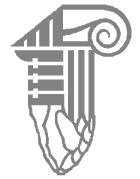 INSTYTUT ARCHEOLOGII I ETNOLOGII POLSKIEJ AKADEMII NAUK
INSTYTUT ARCHEOLOGII I ETNOLOGII POLSKIEJ AKADEMII NAUK
 INSTYTUT BADAŃ LITERACKICH POLSKIEJ AKADEMII NAUK
INSTYTUT BADAŃ LITERACKICH POLSKIEJ AKADEMII NAUK
 INSTYTUT BADAWCZY LEŚNICTWA
INSTYTUT BADAWCZY LEŚNICTWA
 INSTYTUT BIOLOGII DOŚWIADCZALNEJ IM. MARCELEGO NENCKIEGO POLSKIEJ AKADEMII NAUK
INSTYTUT BIOLOGII DOŚWIADCZALNEJ IM. MARCELEGO NENCKIEGO POLSKIEJ AKADEMII NAUK
 INSTYTUT BIOLOGII SSAKÓW POLSKIEJ AKADEMII NAUK
INSTYTUT BIOLOGII SSAKÓW POLSKIEJ AKADEMII NAUK
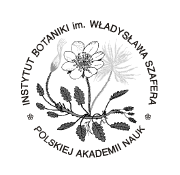 INSTYTUT CHEMII FIZYCZNEJ PAN
INSTYTUT CHEMII FIZYCZNEJ PAN
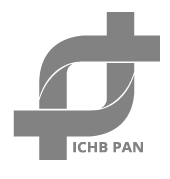 INSTYTUT CHEMII ORGANICZNEJ PAN
INSTYTUT CHEMII ORGANICZNEJ PAN
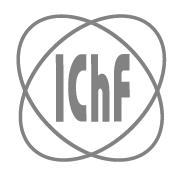 INSTYTUT FILOZOFII I SOCJOLOGII PAN
INSTYTUT FILOZOFII I SOCJOLOGII PAN
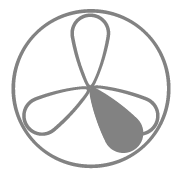 INSTYTUT GEOGRAFII I PRZESTRZENNEGO ZAGOSPODAROWANIA PAN
INSTYTUT GEOGRAFII I PRZESTRZENNEGO ZAGOSPODAROWANIA PAN
 INSTYTUT HISTORII im. TADEUSZA MANTEUFFLA POLSKIEJ AKADEMII NAUK
INSTYTUT HISTORII im. TADEUSZA MANTEUFFLA POLSKIEJ AKADEMII NAUK
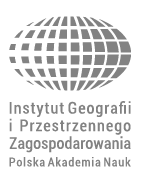 INSTYTUT JĘZYKA POLSKIEGO POLSKIEJ AKADEMII NAUK
INSTYTUT JĘZYKA POLSKIEGO POLSKIEJ AKADEMII NAUK
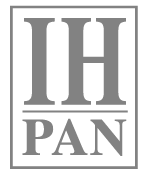 INSTYTUT MATEMATYCZNY PAN
INSTYTUT MATEMATYCZNY PAN
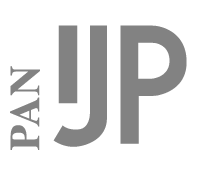 INSTYTUT MEDYCYNY DOŚWIADCZALNEJ I KLINICZNEJ IM.MIROSŁAWA MOSSAKOWSKIEGO POLSKIEJ AKADEMII NAUK
INSTYTUT MEDYCYNY DOŚWIADCZALNEJ I KLINICZNEJ IM.MIROSŁAWA MOSSAKOWSKIEGO POLSKIEJ AKADEMII NAUK
 INSTYTUT PODSTAWOWYCH PROBLEMÓW TECHNIKI PAN
INSTYTUT PODSTAWOWYCH PROBLEMÓW TECHNIKI PAN
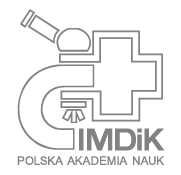 INSTYTUT SLAWISTYKI PAN
INSTYTUT SLAWISTYKI PAN
 SIEĆ BADAWCZA ŁUKASIEWICZ - INSTYTUT TECHNOLOGII MATERIAŁÓW ELEKTRONICZNYCH
SIEĆ BADAWCZA ŁUKASIEWICZ - INSTYTUT TECHNOLOGII MATERIAŁÓW ELEKTRONICZNYCH
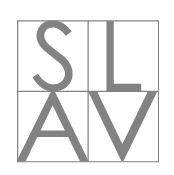 MUZEUM I INSTYTUT ZOOLOGII POLSKIEJ AKADEMII NAUK
MUZEUM I INSTYTUT ZOOLOGII POLSKIEJ AKADEMII NAUK
 INSTYTUT BADAŃ SYSTEMOWYCH PAN
INSTYTUT BADAŃ SYSTEMOWYCH PAN
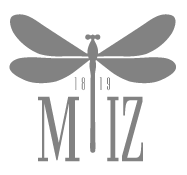 INSTYTUT BOTANIKI IM. WŁADYSŁAWA SZAFERA POLSKIEJ AKADEMII NAUK
INSTYTUT BOTANIKI IM. WŁADYSŁAWA SZAFERA POLSKIEJ AKADEMII NAUK
